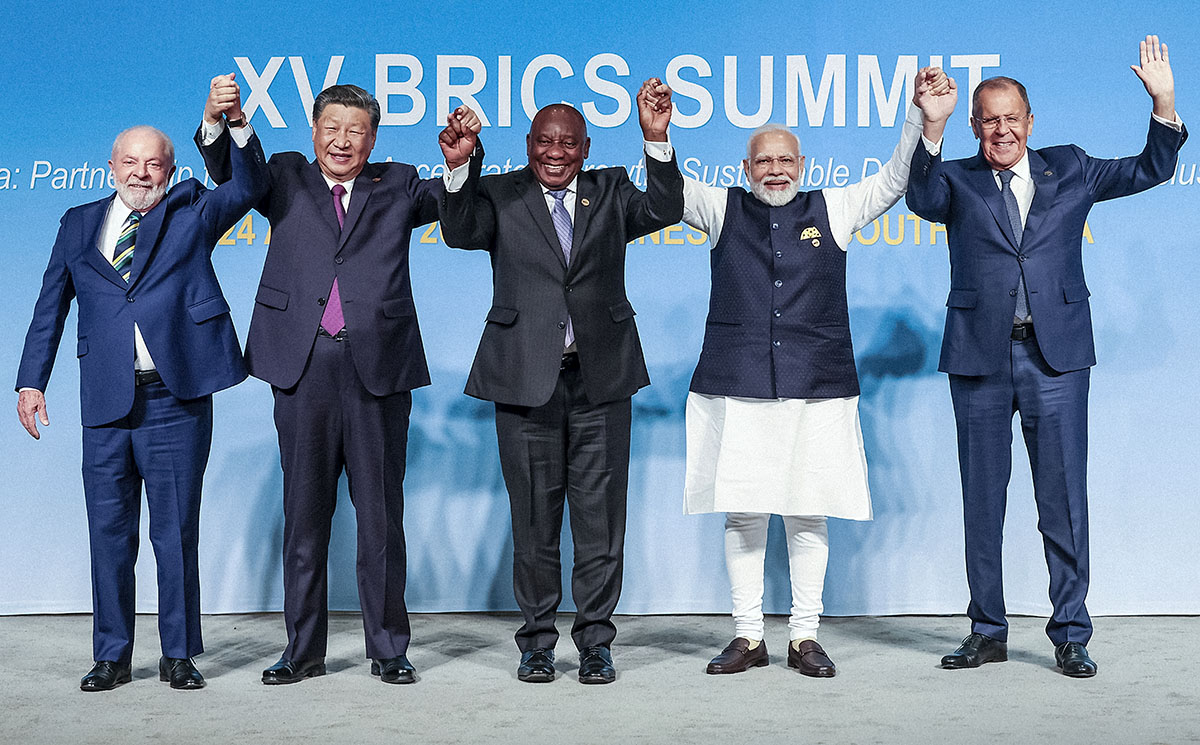By: Carlos Taylhardat – 3 Narratives News | August 27, 2025
Intro: If you live in the free world—North America, Europe, or in vibrant democracies like Australia and New Zealand—you may wonder: who is the real threat to our way of life? Is it China, Russia, Iran, or North Korea? Those names dominate the headlines. But while the world is distracted with wars in Ukraine and Gaza, trade disputes, and Donald Trump’s courtroom drama, another challenge is building in the shadows. Not one country, but a coalition. They call themselves BRICS, and their ambition is to reshape the economic order dominated by the G7 and the U.S. dollar. Could this be the quiet revolution that rewrites the rules of power?
Context: From Acronym to Alliance
BRICS began as a catchy acronym. In 2001, Goldman Sachs economist Jim O’Neill grouped four fast-growing economies—Brazil, Russia, India, and China—as the future engines of global growth. By 2009, the acronym had become an alliance, joined by South Africa in 2010. Today, the group has expanded further, welcoming countries like Egypt, Ethiopia, Iran, and the UAE, and attracting interest from more than 30 others.
Together, BRICS nations represent over half the world’s population and nearly 46% of global GDP when measured by purchasing power parity. They meet annually, often promising a “multipolar world” less dependent on the West. Their initiatives include the New Development Bank—a counter to the World Bank—and experiments with a digital payment system known as BRICS Pay, designed to reduce reliance on the U.S.-led financial order.
As Brazilian President Lula put it earlier this year: “Why should every trade be in dollars? We want a world where the Global South is not just a market, but a player.”
Narrative 1: BRICS as Challenger to the West
Supporters see BRICS as the embryo of a new world order. Russia and China, in particular, frame it as a bulwark against Western sanctions and dollar hegemony. For Moscow, cut off from much of the global financial system after the Ukraine invasion, BRICS is a lifeline. For Beijing, it’s an avenue to expand its Belt and Road investments without U.S. oversight.
The creation of BRICS Pay is emblematic. By enabling member nations to trade in local currencies, BRICS is chipping away at the dollar’s dominance. Analysts note that in 2025 alone, more than a dozen bilateral trade deals among BRICS members were settled without dollars. For countries facing sanctions, like Iran or Russia, this is not just symbolic—it’s survival.
“The future is multipolar, whether Washington likes it or not,” said Sergey Lavrov, Russia’s foreign minister, at a recent summit. “We will not allow one currency to dominate all.”
In the U.S., the concern is blunt. “It’s an attack on the dollar,” said Donald Trump, casting BRICS’ de-dollarisation drive as a direct assault on American prosperity and influence.
Narrative 2: India’s Balancing Act
But BRICS is not a monolith—and nowhere is that clearer than in India. While New Delhi embraces the bloc, it is cautious about challenging the dollar head-on. India’s External Affairs Minister, Randhir Jaiswal, stated bluntly: “De-dollarisation is not on our agenda. The U.S. dollar remains an important currency.”
Why the hesitation? India’s economy is deeply integrated with Western markets and depends heavily on U.S. and European investment. Aligning too closely with Russia and China risks alienating those relationships. Instead, India uses BRICS as a platform to project influence in the Global South while hedging its bets with Washington.
This dual approach makes India the bloc’s swing player. It benefits from BRICS infrastructure projects and access to emerging markets but avoids the more radical rhetoric of Moscow and Beijing. In effect, India keeps one foot in each camp—balancing its historical ties with Russia, its rivalry with China, and its partnership with the U.S.
Video: India’s Finance Minister explains why BRICS must serve India’s best interests. Source: YouTube
Narrative 3: The Silent Story—What It Means for Ordinary Lives
For most people, the idea of “de-dollarisation” feels abstract. But the ripple effects are tangible. In South Africa, small traders are beginning to accept Chinese yuan for cross-border trade. In Brazil, farmers are exploring contracts denominated in reais and yuan instead of dollars. And in Iran, sanctions have pushed everyday businesses into alternative payment systems pioneered by BRICS partners.
Glob
